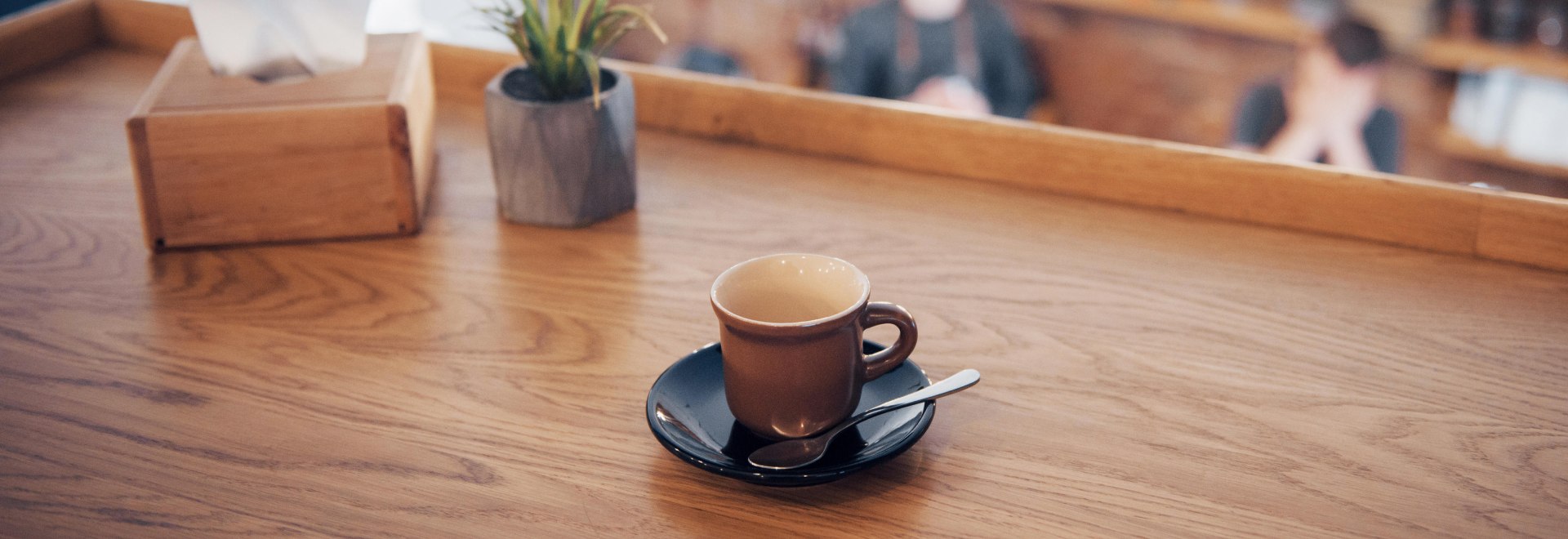How can coffee shops manage rising costs without decreasing coffee quality?
Bronwyn Linkhorn speaks with two coffee experts to find out about the impact of rising costs and what businesses can do to survive without compromising on quality.
The past two years have presented unprecedented financial challenges for businesses all over the world – and coffee shops are no exception.
As life came to a halt following the outbreak of Covid-19, coffee shops were forced to close – some temporarily, others forever. Those that did survive had to adapt to a radically different landscape, from launching ecommerce sites to offering home delivery.
However, despite some respite from landlords and government grants, running costs, for the most, were still an ever-present concern. Many businesses continued to cover expenses during lockdowns, while a large proportion of service staff – including baristas and waiters – began to look elsewhere for better opportunities.
Just two years down the line, coffee shops are still struggling with significant staff shortages. In many cases, these businesses have had to increase wages in order to retain staff and remain competitive.
The pandemic also significantly contributed to the ongoing energy crisis. With people working from home, demand for energy soared. Now, businesses have been left to adapt to higher energy costs.
The increase in costs and the subsequent energy crisis is not the result of one significant event, but rather a consequence of several issues occurring in quick succession.
Russia’s invasion of Ukraine earlier this year has added further strain to the energy crisis, disrupting trade and production in several industries. In fact, the World Bank has warned that food and energy costs may remain disproportionately high for up to three years.
“Nearly everything that goes into making a cup of coffee has increased, from the beans to the barista themselves,” says Alex Dawson, a senior barista at The Coffee Dispensary.
“Electricity prices have obviously gone up over the last few months which, given the amount of energy used in a coffee shop, it’s something that certainly has to be considered each month.”
Is there a balance between retaining customers and managing costs?
Professional roaster and 2021 UK Latte Art Champion, Ben Rowe, explains that what happens on one end of the coffee supply chain is bound to have an impact on the other.
“The trickle-down effect in the supply chain is pretty rough,” he says. “Everything that happens at origin happens pretty much a year later at the consumer level.”
For any business experiencing a rise in operating costs, the natural reaction may be to reduce costs within its own supply chain. For coffee shops, the easiest route is often to purchase cheaper coffee.
However, although tempting, this can have incredibly detrimental impacts for coffee shops, as the quality of coffee served is instrumental to success.
The 2022 NCDT Specialty Coffee Report revealed that specialty coffee is increasing in popularity, now representing 62% of daily coffee consumption in America – an increase of 6% from the previous year.
Around 80% of people who visit coffee shops in the UK do so at least once a week, and a further 16% visit on a daily basis. For those who regularly frequent cafés, quality and consistency are often the major draw cards.
In many markets, consumers are quickly learning the value of high-quality coffee. As such, serving low-quality coffee can very quickly ruin the reputation of a café. This is a double-whammy, as it deters both regular customers and potential new customers, too.
“I would say the most important part of the trip [to a coffee shop] is both customer service and the coffee we make,” Alex elaborates. “Both factors have a lasting impression on anyone who visits a coffee shop.”
Effectively, then, coffee shops are being forced to find alternative ways of absorbing rising costs. One way of doing this is to implement energy-efficient technologies.
What can coffee shop owners do to manage rising costs?
It’s estimated that energy costs make up as much as 60% of the expenses of a hotel business. Furthermore, research shows that coffee shops use significantly more energy per square foot than other commercial spaces.
Carimali’s Armonia Soft Plus and Armonia Ultra superautomatic coffee machines feature MaxSave, a system that can slash energy consumption by around a third using a simple device: a motion sensor.
The machines can detect the presence of users, allowing them to enter a low-energy state when not in use. At the same time, they’re ready to go as soon as someone approaches.
Optimising the energy efficiency of the coffee shop is an effective way to cut both costs and carbon emissions. Aside from upgrading to more modern coffee machines, this can also be done by reducing heat loss and upgrading to more efficient lighting.
Automation doesn’t have to be limited to motion sensor technology, either. Coffee shop owners can consider automating other aspects of the coffee-making process, such as milk frothing.
Not only does this free up time for baristas – who may be present in limited numbers – it creates better efficiency throughout the business and may actually create better customer engagement.
Ultimately, however, it’s important for coffee businesses to be open and honest about rising costs. So far, consumers have been largely shielded by the increasing cost of preparing a cup of coffee, but inevitably, coffee shops will be forced to up the price of their lattes and flat whites.
If a business can be open, offer high-quality coffee, and pride itself on excellent service, it can successfully navigate this challenging time.







